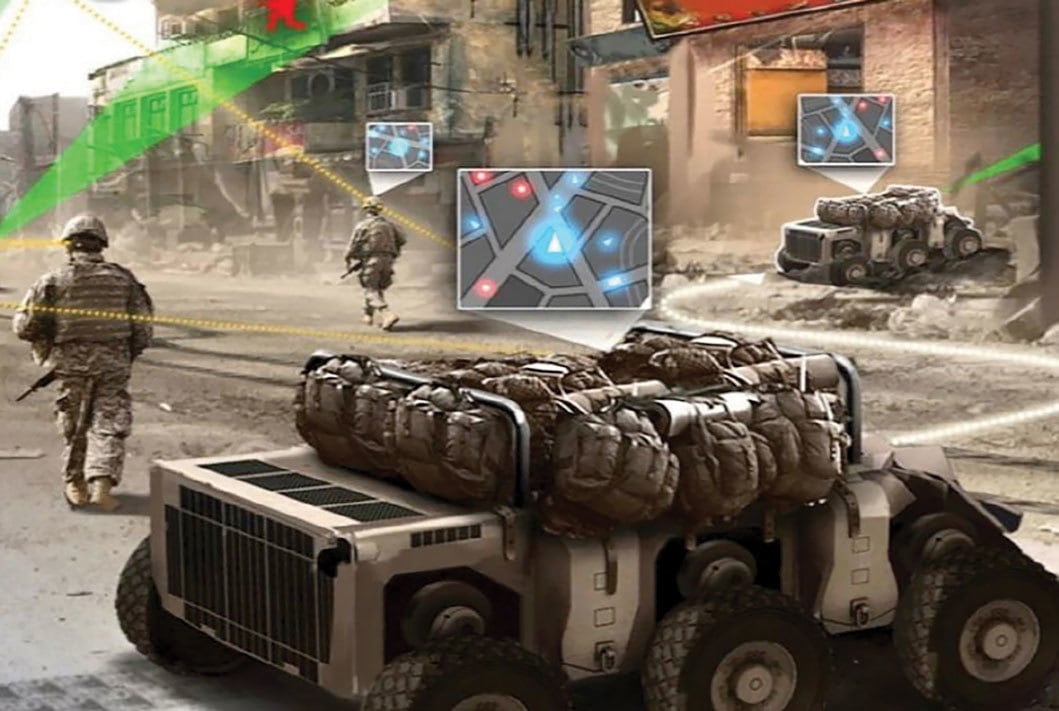Finding new ways to incorporate robots and autonomous or semi-autonomous vehicles into warfighting has captured the attention of researchers, programs and top commanders in recent years. But nothing as basic and practical as the gear mule concept has come so close to reality.
This year, soldiers with the 101st Airborne Division and 10th Mountain Division and Marines at Camp Lejeune, North Carolina, received batches of four different variants of the Squad Multipurpose Equipment Transport.
Four companies have offered their versions for soldiers and Marines to test in rugged terrain and in austere conditions.
They are the MRZR X, based off the Polaris MRZR currently in service with the Marines; the General Dynamics 4x4 Multi-Utility Tactical Transport or MUTT; the Howe and Howe RS2-H1; and the HDT Global Hunter WOLF, or Wheeled Offload Logistics Follower.
The MRZR X is a four-wheeled all-terrain vehicle; and the MUTT is an eight-wheeled vehicle with a flatbed configuration.
The Hunter WOLF is a six-wheeled vehicle that uses a morphed tire/track for traction; and the RS2-H1 is the only tracked vehicle submission.
All can be run with a one-handed remote control. Two can be driven using non-line of sight maneuvering with onboard sensors and cameras.
The MRZR X is an “optionally manned” vehicle that can be driven either by a human driver in the seat or by remote control.
RELATED

The testing moving forward will see if the vehicles can carry enough gear for a nine-soldier squad — nine rucks, two fuel jugs, two water jugs and three days’ worth of Meals Ready to Eat — as well as carry batteries and charge them while on mission.
The three basic requirements for the vehicles are to carry 1,000 pounds, travel 60 miles in 72 hours, and charge up at a 3-kilowatt rate while stationary and a 1-kilowatt rate while on the move.
Soldiers and Marines will have nearly all of 2019 to put the vehicles through their paces and then provide feedback. A downselect to two designs is expected later this year, with the final winner picked in 2020.
But officials didn’t rule out selecting two vehicle designs for fielding, depending on what each vehicle offers as planners look to the terrain challenges of dismounted operations.
Todd South has written about crime, courts, government and the military for multiple publications since 2004 and was named a 2014 Pulitzer finalist for a co-written project on witness intimidation. Todd is a Marine veteran of the Iraq War.



